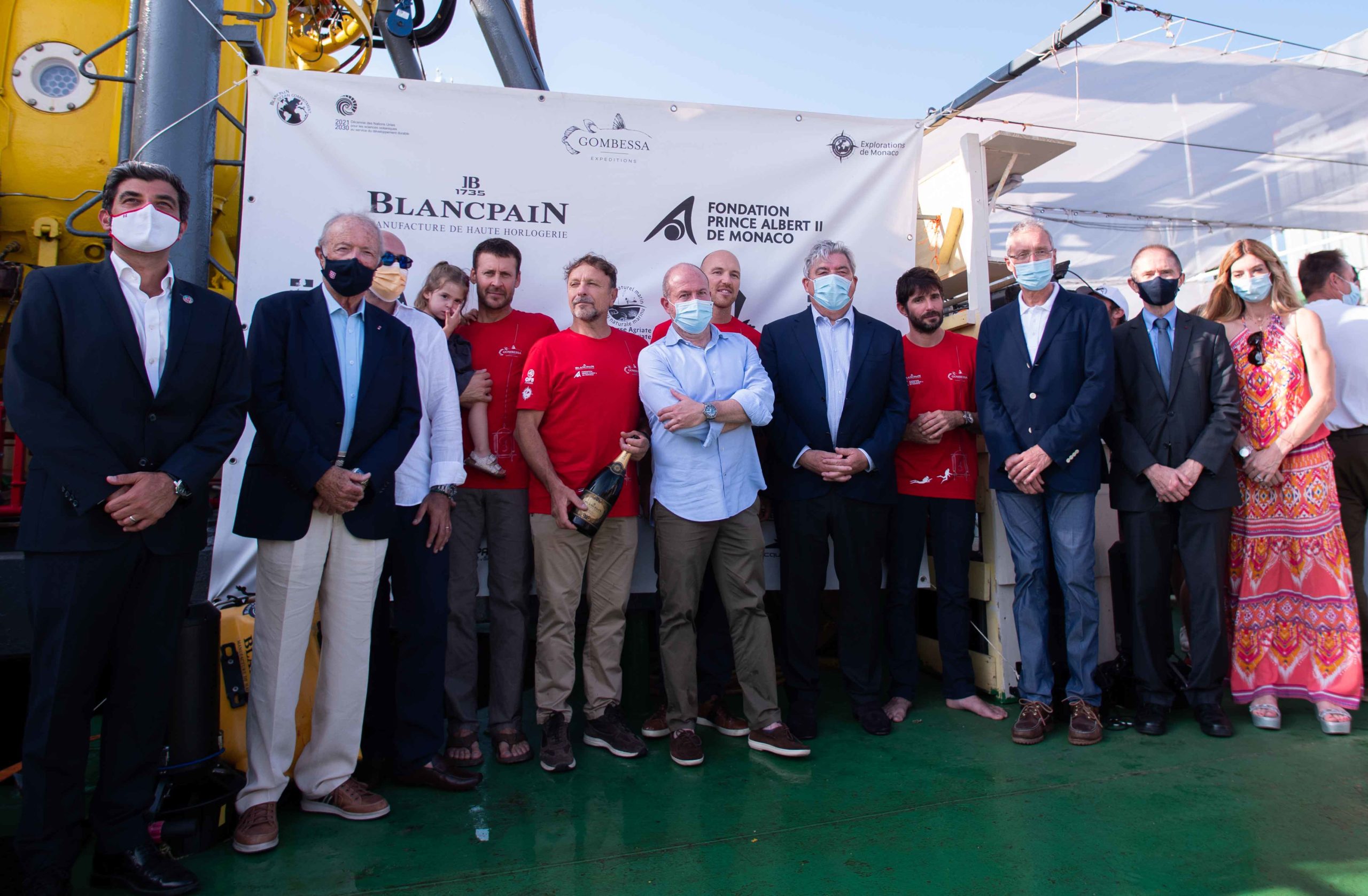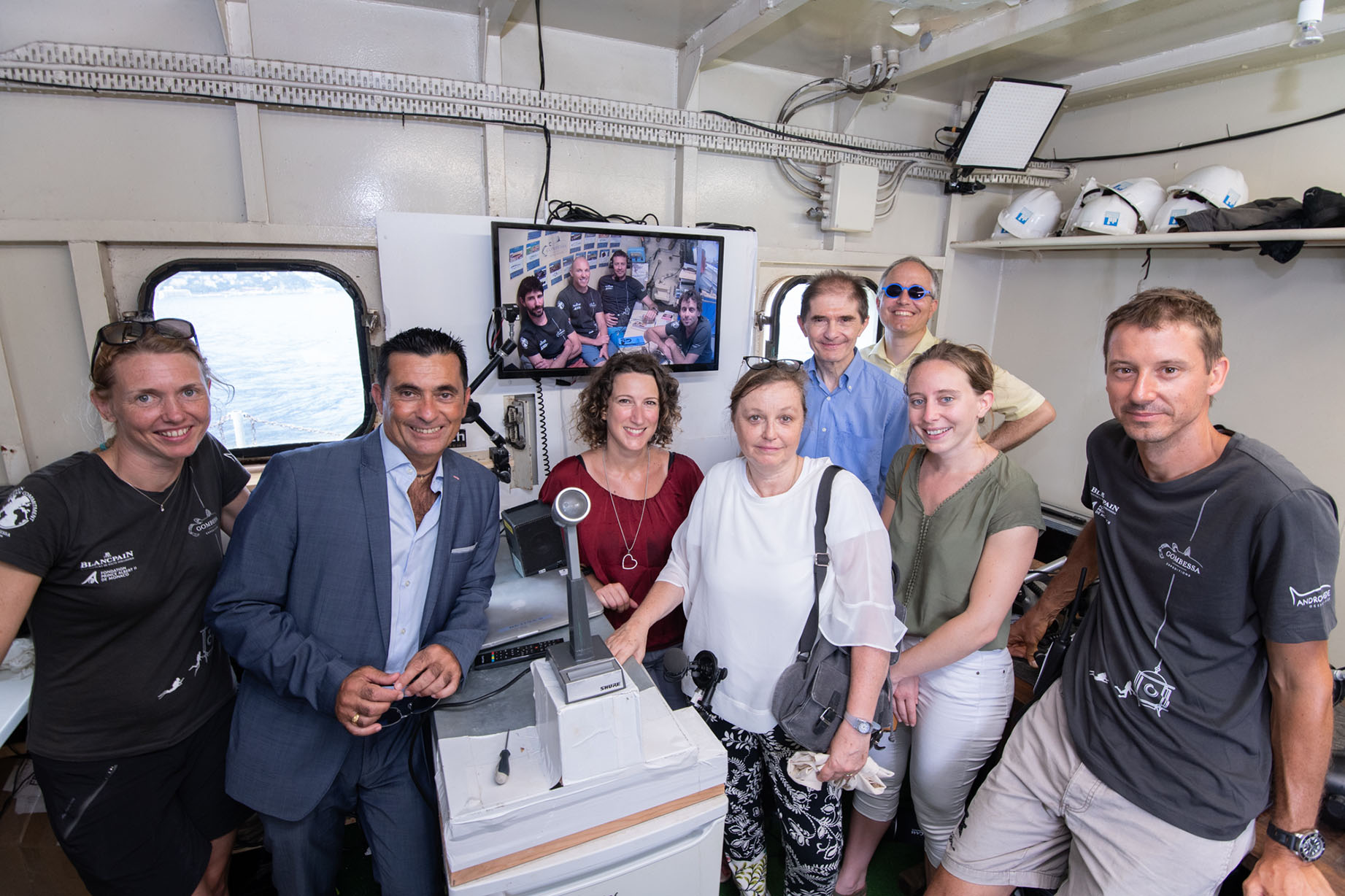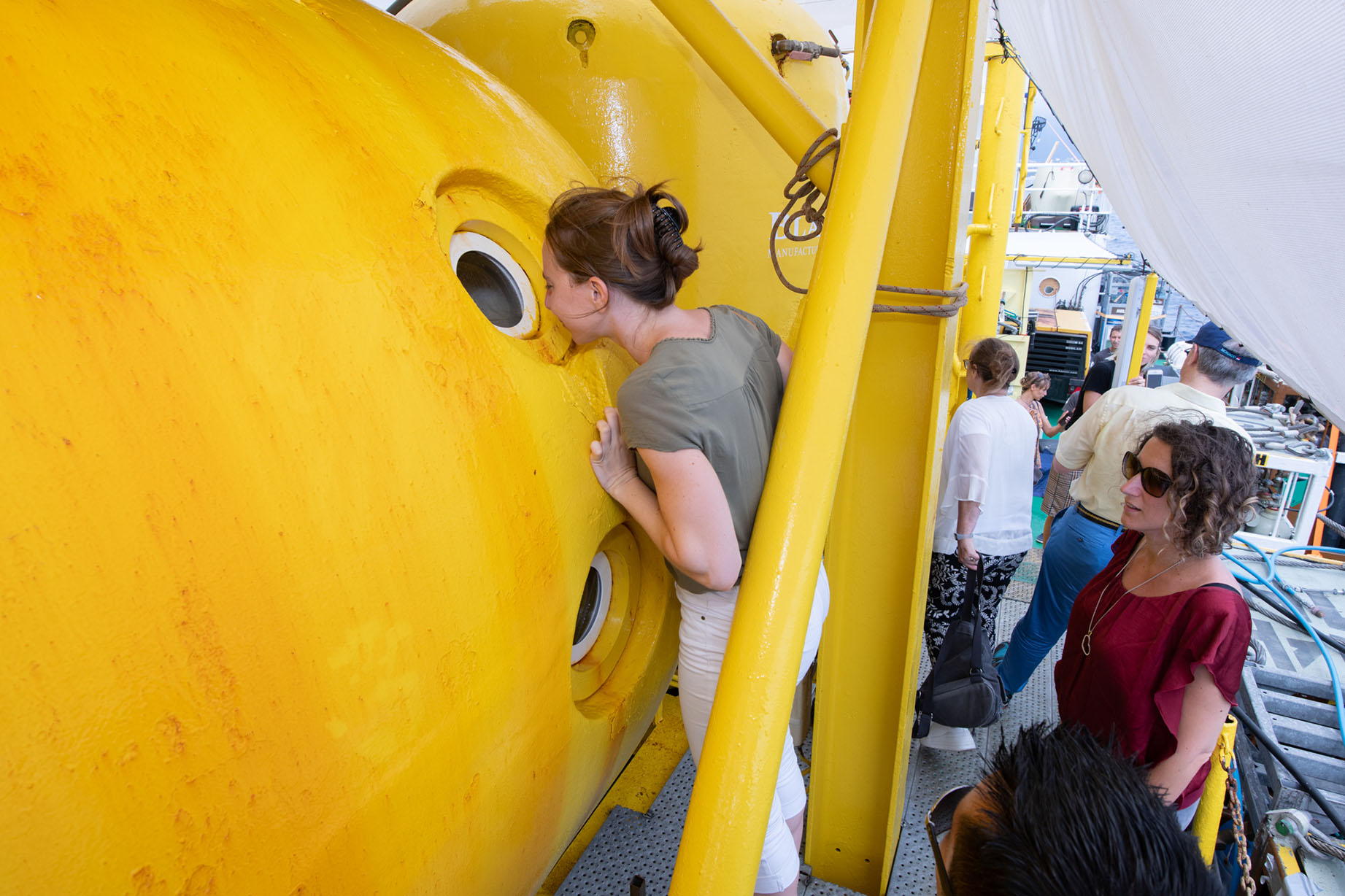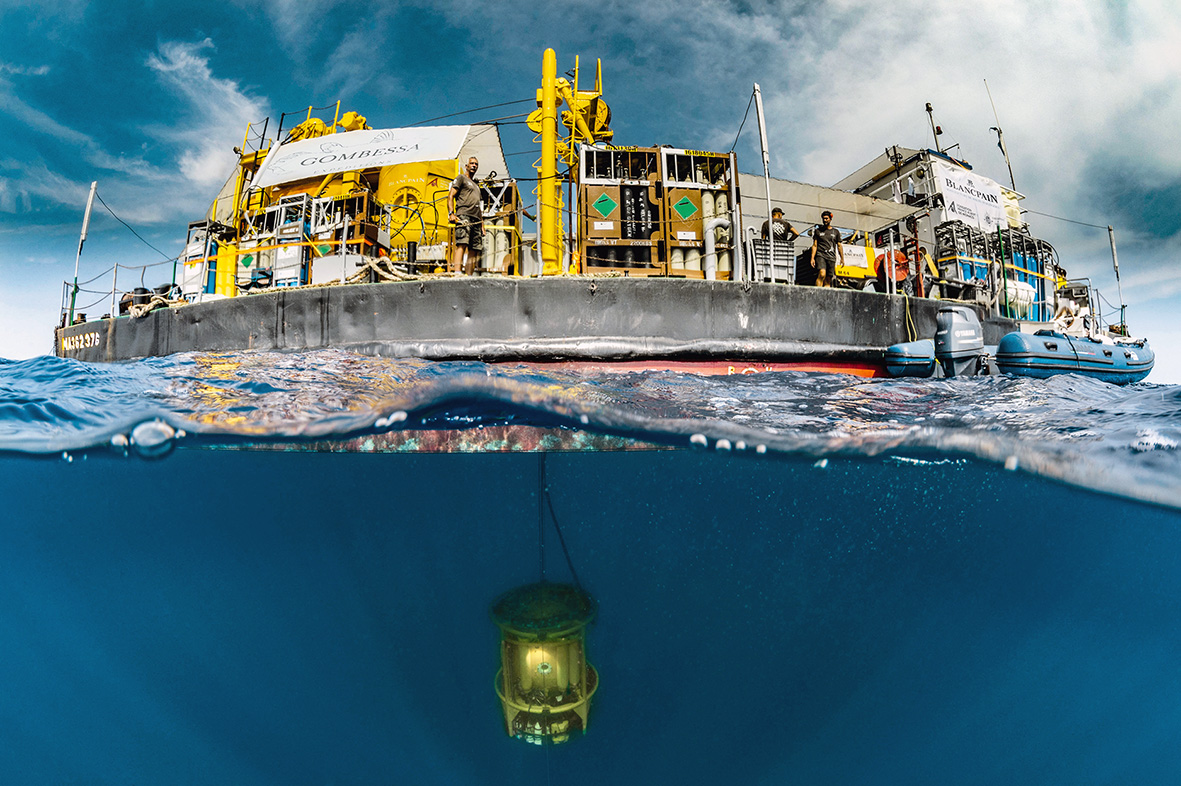
July 1 to 28, 2019
MISSION GOMBESSA 5 2019 – MEDITERRANEE
- ADN environnemental, Corals, Deep sea, Mediterranean
Science, technology and underwater adventure
Laurent Ballesta, photographer, biologist and expedition leader , and his 3 companions, Antonin Guilbert, Thibault Rauby and Yanick Gentil, set themselves an unprecedented challenge : to remain for 28 days in a row at a pressure 13 times higher than normal, equivalent to an average depth of 120 meters.
The challenge: to considerably extend their diving time in order to better explore little-known deep-sea ecosystems, usually inaccessible to divers, in very short periods of time.
Whether it’s a sporting challenge, an ecological challenge or unique images, this expedition represents a new milestone in the history of scuba diving.
What did I come here to do?
Explore the sea?
Everything you can see here, I already know.
I descended in pursuit of a mirage, gave in to the vertigo of this blue tear and reached the very center of the dream.
L’AVENTURE SOUS-MARINE, Philippe Diolé, 1953
Objectives
Explorations de Monaco and the Prince Albert II of Monaco Foundation supported this multi-faceted expedition, with its scientific and physiological aspects, as well as its promise of revealing images of unknown underwater life.
Laurent Ballesta and his partners collaborated with over a dozen scientific teams.
On the sites explored between Marseille and Monaco, several types of manipulations and sampling were carried out according to precise protocols followed by the divers: mapping the seabed, searching for rare species, studying pollution levels, taking water samples to study environmental DNA, sampling gorgonians, etc.

Location

The marriage of two techniques
Saturation diving (confinement under pressure) and deep sport diving (using rebreather suits) give divers the freedom to explore uncharted spaces for hours on end.
Laurent, Antonin, Thibault and Yannick stayed in a pressurized steel bathyal station (at the pressure of the explored seabed, between 7 and 13 bars).
400 hours of diving
The 4 divers went out each day using a turret under which they retrieved their rebreathers once on site, then set off for a one to three-hour exploration dive.
The only time limit was cold resistance.
In all, they made 31 dives, over 400 hours of diving at depths of between 60 and 144 m in the space of 28 days.
Pre-dive briefing © M.Boussion EDM
Turret ©Laurent Ballesta, Andromède Océanologie, GOMBESSA 5
Benthic bell ©Laurent Ballesta, Andromède Océanologie, GOMBESSA 5
Benthic bell ©Laurent Ballesta, Andromède Océanologie, GOMBESSA 5
Benthic bell ©Laurent Ballesta, Andromède Océanologie, GOMBESSA 5
Carbon traps?
The mesophotic zone, an intermediate zone between 60 and 180 meters below the surface and the total darkness of the abyss, remains largely undiscovered.
The Gombessa 5 explorers describe varied ecosystems, characterized by a high density of sponges, invertebrates and the presence of large quantities of calcareous algae.
Benthic bells were placed on these organisms at various depths, to measure photosynthetic activity and respiration live.
The aim: to find out whether these ecosystems are trapping carbon dioxide or, on the contrary, releasing CO2.
Analysis of the measurements taken is underway and will take several months.
Four divers... and some thirty crew members
Laurent Ballesta is a photographer, biologist and underwater expedition leader.
He has already led four other Gombessa expeditions.
Antonin Guilbert is a marine biologist and professional diver.
He has been involved in numerous mapping campaigns, quality monitoring and management of the marine environment.
Thibault Rauby is a diving instructor and assistant lighting technician.
A reference in terms of “tech diving”, he has worked on various audiovisual projects, including each of the Gombessa Expeditions documentaries.
Yannick Gentil is a diving cameraman.
He is the resident cameraman for the Gombessa expeditions.
Photo of the Gombessa 5 team as the divers exit the chamber on July 28, 2019 ©Didier Théron
Gorgonian sea fans sampling
During the mission, Laurent and his team collaborated with the Centre Scientifique de Monaco (CSM) to work on five Gorgonian species, including the red coral.
Samples were taken during several dives and brought back to the surface team on the catamaran that followed the barge throughout the mission.
These samples are currently being processed at the CSM for ecophysiological and genetic analyses.
Mediterranean red coral, Corallium rubrum ©M.Boussion
Gorgonians off Monaco ©Laurent Ballesta_Andromede_Gombessa V
Parrotfish, Callanthias ruber ©Laurent Ballesta, Andromède Océanologie, GOMBESSA 5
Loading the turret before the dive ©M.Boussion Explorations de Monaco
Precious photographs
The great freedom of movement and extended dive times during the mission facilitated the capture of exceptional images, ranging from completely untouched natural scenery to animals rarely seen alive in their environment, such as the Elegant Crab, the Parrot Barber or the Ocellated Megrimshaw.
These and many other species have never been photographed before.
All these images will be the subject of a photographic exhibition in 2020.
A validated tool for environmental DNA
Already tested on previous Monaco Explorations missions, environmental DNA is a highly promising technique for studying the “genetic” traces left in seawater by underwater animals during their passage at a given time, in a given place.
Traces of DNA are recovered after sterile filtration of seawater, pumped to the required depth.
These traces are then compared with known genetic maps.
During the mission, Gombessa 5 divers optimized a new sampling technique developed by Spygen, a biotechnology company, using a continuous filtration pump system attached to the diver or other support.
This enabled 30 liters of water to be filtered over a 500 m course, and the method was validated.
A promising technique for environmental DNA.
Location
Sites explored 1 Gombessa 5 ©L.Ballesta, Andromède Océanologie
Sites explored 2 Gombessa 5 ©L.Ballesta, Andromède Océanologie
Sites explored 3 Gombessa 5 ©L.Ballesta, Andromède Océanologie
Sites explored 4 Gombessa 5 ©L.Ballesta, Andromède Océanologie


- ·
